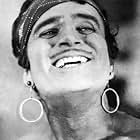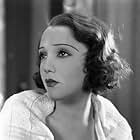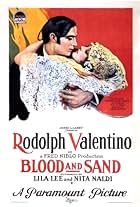Wall Street wizard Larry Day, new to the ways of love, is coached by his valet. He follows Vivian Benton on an ocean liner, where cocktails laced with a "love potion," work their magic. He t... Read allWall Street wizard Larry Day, new to the ways of love, is coached by his valet. He follows Vivian Benton on an ocean liner, where cocktails laced with a "love potion," work their magic. He then loses his fortune in the market crash and feels that he has also lost his girl.Wall Street wizard Larry Day, new to the ways of love, is coached by his valet. He follows Vivian Benton on an ocean liner, where cocktails laced with a "love potion," work their magic. He then loses his fortune in the market crash and feels that he has also lost his girl.
William Begg
- Ship's Party Guest
- (uncredited)
James Conaty
- Office Worker
- (uncredited)
Marcelle Corday
- Vivian's Maid
- (uncredited)
Emmett Corrigan
- Timothy Grovener - Bank President
- (uncredited)
Adrienne D'Ambricourt
- Vivian's Maid
- (uncredited)
Jay Eaton
- Ship's Party Guest Listening to Singer
- (uncredited)
Bill Elliott
- Ship's Party Guest
- (uncredited)
Alphonse Martell
- Warden
- (uncredited)
- Director
- Writers
- All cast & crew
- Production, box office & more at IMDbPro
Storyline
Did you know
- TriviaBing Crosby's first released appearance on film as a solo performer.
- Alternate versionsOriginally released at 91 minutes; surviving versions are usually cut to 62 minutes. A 74-minute version aired in 1998 on USA cable channel AMC.
- ConnectionsFeatured in Hollywood and the Stars: The One and Only Bing (1963)
- SoundtracksWhen the Folks High Up Do the Mean Low-Down
(uncredited)
Written by Irving Berlin
Sung by Bing Crosby, Bebe Daniels, June MacCloy and chorus
Featured review
REACHING FOR THE MOON (United Artists, 1930), written and directed by Edmund Goulding, would be an interesting title best suited for a 1950s science fiction movie about astronauts rocketing to the moon, but in this instance, a lightweight comedy that takes place on board ship shortly after the 1929 Stock Market Crash where its central characters are a Wall Street wizard and an aviatrix. With a cast consisting mostly of silent screen veterans, the main attractions are the leading players Douglas Fairbanks, best known for his legendary swashbucklers as Zorro and Robin Hood, and Bebe Daniels, whose career during the sound era has overshadowed her popularity of the silent screen, thanks to the frequent revivals of 42nd STREET (Warners, 1933) for which she is best known.
Following an overview (theatrical setting) of New York skyscrapers, the story opens at the Ritzbelt Hotel where two separate events are taking place: first a departure party for renowned aviatrix Vivian Benton (Bebe Daniels) in the Queen Room; and a dinner party hosted by Larry Day (Douglas Fairbanks) in the Wall Street Room. Vivian, daughter of a millionaire (Walter Walker), is secretly engaged to the stuffy British Sir Horace Partington (Claude Allister, with a catch phrase of "What a country"), while Larry, a carefree bachelor, thinks more of his job than women. Upon his departure, Larry bypasses Vivian, who shows an immediate interest in him. Jimmy Carrington (Jack Mulhall), one of Larry's employees, makes a bet that she cannot get his attention before she set sails for Europe the following day. Vivian takes that wager and gets to work. The next morning, Vi makes every effort to get past the secretary (Helen Jerome-Eddy) while posing as a Southern gal. Her influence works, leading her into Larry's office where she not only gets five minutes of his time, but an invitation to dinner at his 20th floor penthouse located on 380 Park Avenue, which so happens to be across the street from her residence. Before Vivian is set to arrive, Larry's servant, Roger (Edward Everett Horton) demonstrates his own method of making love to a woman while sitting on a patio swing, a scene that raises eyebrows from an electrician observing from afar. Wondering what has happened to her, Larry receives a telephone call from Vivian telling him how she has won the bet with Jimmy and is now sailing for England on the L'Amerique. She then asks him, "What are you going to do about it?" A victim of a practical joke, and overwrought over her laughter, Larry yanks the phone over to the floor and angrily replies, "I'll show you what I'm going to do!" And that he does once he and Roger go on board, with every effort to get his last laugh on her.
Basically a comedy reminiscent to the Ernst Lubitch style due to its risqué dialog and offbeat humor, REACHING FOR THE MOON came at a time when such romantic themes were becoming passé, especially those including songs. Based on a story with music by Irving Berlin, one of America's greatest songwriters, its opening credits promises a musical, but all that remains is the upbeat "Low Down" number set during a gathering among shipboard passengers. It's introduced by an up-and-coming Bing Crosby, re-prised by Bebe Daniels and the deep sounding vocals of June McClory. "Low Down" is underscored much of the time along with other themes that didn't make it to the final print. Aside from wondering how REACHING FOR THE MOON might have appeared with other musical interludes intact, what's also interesting is the way Fairbanks works his acrobatics, which he used so prominently in his silent film adventures, into the story, ranging from sliding down the pole from the sun deck to one particular scene where he takes Angels Breath, a drink prepared by his servant including Pocoraca, a wonder drug. Once he takes it, he becomes hyper, running and jumping happily all over the place, going out of control climbing the walls with laughter. By the time Vivian drinks it, she storms out from Larry's state room quite hostile and carefree.
With this being Fairbanks' best known talkie, REACHING FOR THE MOON was nearly forgotten until the wake of cable television and home video during the early 1980s. Aside from the outtakes of musical numbers, shortening the proposed 91 minute musical-comedy to 74 minutes, reissue prints that have been circulating, especially those presented on public television during the late night hours, are the 62 minute prints that eliminate Vi and Larry's acquaintance in his Wall Street office. Even at its near restored length that aired on American Movie Classics (1997-2000), REACHING FOR THE MOON continues to resemble a butchered movie with flimsy plot consisting of scenes and fade-outs coming in and out of nowhere. It's never even explained how the Larry Day character got on board L'Amerique after it sailed out to sea, or why a lady aviator would travel on a cruise ship when she could take her own private airplane? In spite of some setbacks, REACHING FOR THE MOON is occasionally entertaining, "fun," "wonderful fun," however starts to wear thin towards the end with some corny dialog spoken by Fairbanks.
The movie itself may not promise the moon, but for film buffs, a chance to reach for the stars, Douglas Fairbanks, Bebe Daniels (being a blonde this time around) and a very young Bing Crosby, in his second film role, whose popularity as an actor/singer was only two years away. (***)
Following an overview (theatrical setting) of New York skyscrapers, the story opens at the Ritzbelt Hotel where two separate events are taking place: first a departure party for renowned aviatrix Vivian Benton (Bebe Daniels) in the Queen Room; and a dinner party hosted by Larry Day (Douglas Fairbanks) in the Wall Street Room. Vivian, daughter of a millionaire (Walter Walker), is secretly engaged to the stuffy British Sir Horace Partington (Claude Allister, with a catch phrase of "What a country"), while Larry, a carefree bachelor, thinks more of his job than women. Upon his departure, Larry bypasses Vivian, who shows an immediate interest in him. Jimmy Carrington (Jack Mulhall), one of Larry's employees, makes a bet that she cannot get his attention before she set sails for Europe the following day. Vivian takes that wager and gets to work. The next morning, Vi makes every effort to get past the secretary (Helen Jerome-Eddy) while posing as a Southern gal. Her influence works, leading her into Larry's office where she not only gets five minutes of his time, but an invitation to dinner at his 20th floor penthouse located on 380 Park Avenue, which so happens to be across the street from her residence. Before Vivian is set to arrive, Larry's servant, Roger (Edward Everett Horton) demonstrates his own method of making love to a woman while sitting on a patio swing, a scene that raises eyebrows from an electrician observing from afar. Wondering what has happened to her, Larry receives a telephone call from Vivian telling him how she has won the bet with Jimmy and is now sailing for England on the L'Amerique. She then asks him, "What are you going to do about it?" A victim of a practical joke, and overwrought over her laughter, Larry yanks the phone over to the floor and angrily replies, "I'll show you what I'm going to do!" And that he does once he and Roger go on board, with every effort to get his last laugh on her.
Basically a comedy reminiscent to the Ernst Lubitch style due to its risqué dialog and offbeat humor, REACHING FOR THE MOON came at a time when such romantic themes were becoming passé, especially those including songs. Based on a story with music by Irving Berlin, one of America's greatest songwriters, its opening credits promises a musical, but all that remains is the upbeat "Low Down" number set during a gathering among shipboard passengers. It's introduced by an up-and-coming Bing Crosby, re-prised by Bebe Daniels and the deep sounding vocals of June McClory. "Low Down" is underscored much of the time along with other themes that didn't make it to the final print. Aside from wondering how REACHING FOR THE MOON might have appeared with other musical interludes intact, what's also interesting is the way Fairbanks works his acrobatics, which he used so prominently in his silent film adventures, into the story, ranging from sliding down the pole from the sun deck to one particular scene where he takes Angels Breath, a drink prepared by his servant including Pocoraca, a wonder drug. Once he takes it, he becomes hyper, running and jumping happily all over the place, going out of control climbing the walls with laughter. By the time Vivian drinks it, she storms out from Larry's state room quite hostile and carefree.
With this being Fairbanks' best known talkie, REACHING FOR THE MOON was nearly forgotten until the wake of cable television and home video during the early 1980s. Aside from the outtakes of musical numbers, shortening the proposed 91 minute musical-comedy to 74 minutes, reissue prints that have been circulating, especially those presented on public television during the late night hours, are the 62 minute prints that eliminate Vi and Larry's acquaintance in his Wall Street office. Even at its near restored length that aired on American Movie Classics (1997-2000), REACHING FOR THE MOON continues to resemble a butchered movie with flimsy plot consisting of scenes and fade-outs coming in and out of nowhere. It's never even explained how the Larry Day character got on board L'Amerique after it sailed out to sea, or why a lady aviator would travel on a cruise ship when she could take her own private airplane? In spite of some setbacks, REACHING FOR THE MOON is occasionally entertaining, "fun," "wonderful fun," however starts to wear thin towards the end with some corny dialog spoken by Fairbanks.
The movie itself may not promise the moon, but for film buffs, a chance to reach for the stars, Douglas Fairbanks, Bebe Daniels (being a blonde this time around) and a very young Bing Crosby, in his second film role, whose popularity as an actor/singer was only two years away. (***)
- How long is Reaching for the Moon?Powered by Alexa
Details
- Runtime1 hour 31 minutes
- Sound mix
- Aspect ratio
- 1.20 : 1
Contribute to this page
Suggest an edit or add missing content





































